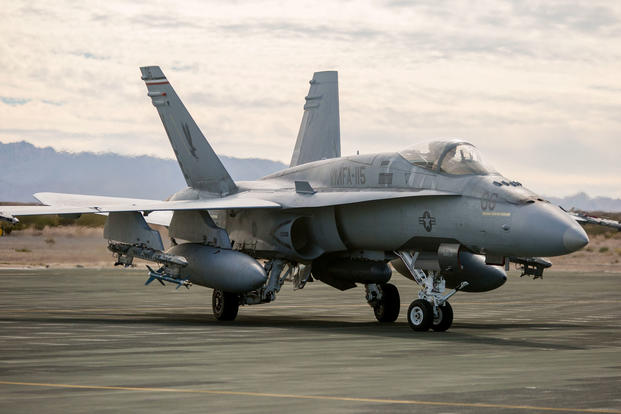The U.S. Marine Corps' F/A-18C/D Hornet fighter fleet is getting a radar upgrade.
The service selected Raytheon Co. to upgrade the aircraft to the APG-79(v)4 active electronically scanned array (AESA) radar, according to a company announcement.
The radar is a scaled version of the APG-79 AESA, which has been integrated into Super Hornets and EA-18G Growlers. The APG-79 gives pilots additional situational awareness, high-performance targeting and extended range. A contract amount was not disclosed.
"With AESA radars, fighter jet pilots and crews tip the scales in their favor over their adversaries," said Eric Ditmars, vice president of Raytheon Secure Sensor Solutions, in a release. "Now that the APG-79(v)4 is slated to fly on the classic Hornet, Marine Corps pilots will be able to identify, track and engage more targets over a greater distance than ever before."
The AESA radar helps achieve better performance during air-to-ground missions, company officials said.
For example, Lockheed Martin Corp.'s latest F-16V fighter jet is equipped with an AESA variant, which provides air-to-ground capabilities like its fifth-generation F-22 Raptor and F-35 Lightning II counterparts.
The APG-79(v)4 radar also enhances maritime strike capabilities, the release said.
U.S. Naval Air Systems Command submitted a request for the improved radar in March, according to Janes. NAVAIR intends to upgrade seven squadrons of 12 aircraft each with 98 new radars, plus 14 spare systems, Janes reported at the time.
"Because the APG-79(v)4 shares more than 90 percent commonality with the APG-79, the Marine Corps will benefit from the same global sustainment and upgrade path already in place for the system," Raytheon officials said.
Deliveries will begin next year and are expected to be completed by 2022.
The upgrade announcement comes as both the Navy and Marine Corps plan to sustain and supply their aging aircraft fleets with new technologies.
-- Oriana Pawlyk can be reached at oriana.pawlyk@military.com. Follow her on Twitter at @Oriana0214.










